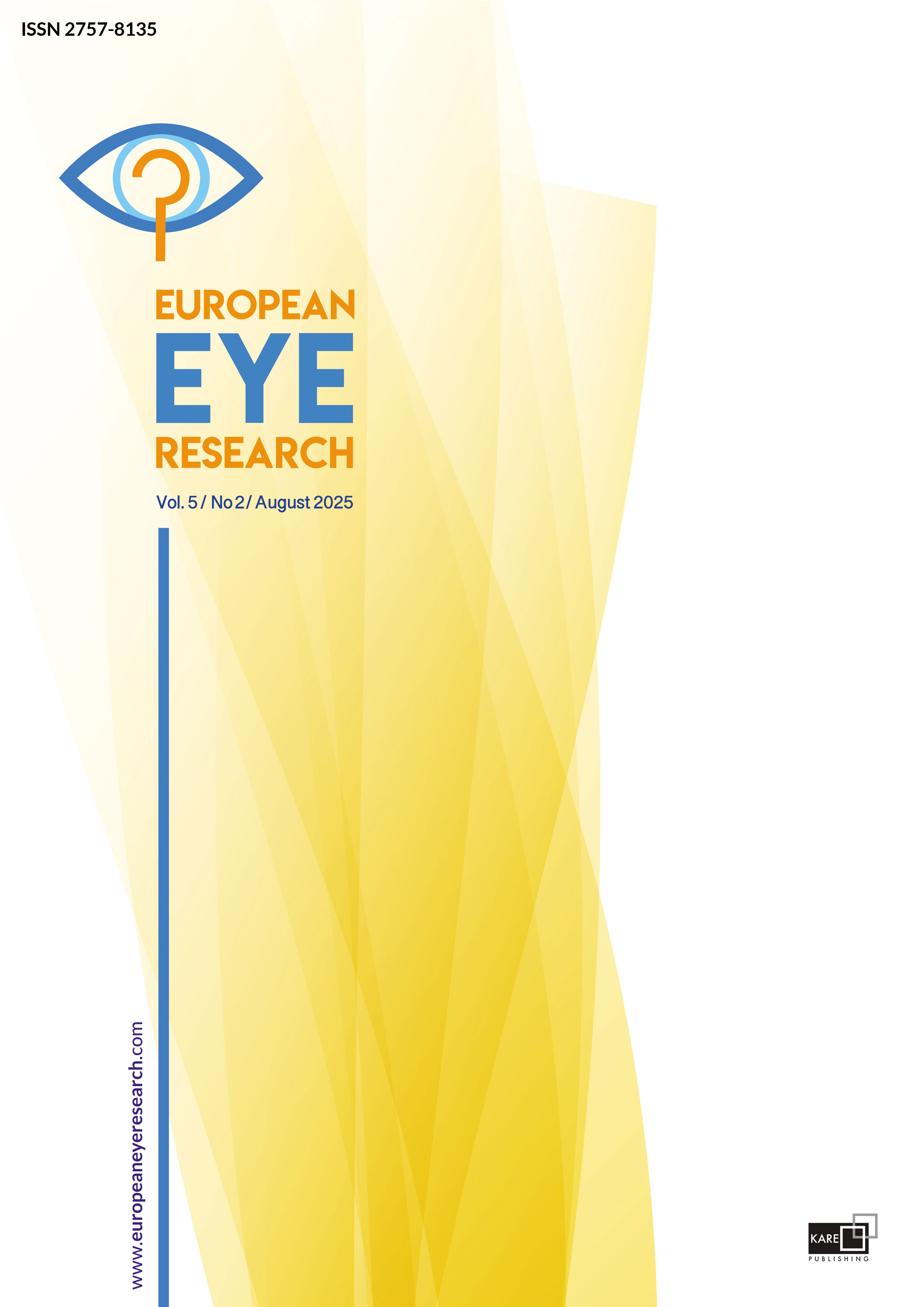

The impact of daily and monthly contact lenses on dry eye, comfort, and beyond
Emine Esra Karaca1, Ozlem Aktas Ozaltun2, Yonca Asfuroglu3, Dilay Ozek3, Ozlem Evren Kemer11Department of Ophthalmology, University of Health Sciences, Ankara Bilkent City Hospital, Ankara, Türkiye2Department of Ophthalmology, Karabuk Training and Research Hospital, Ankara, Türkiye
3Department of Ophthalmology, Ankara Bilkent City Hospital, Ankara, Türkiye
PURPOSE: The purpose of this study is to investigate the effects of daily and monthly contact lenses (CLs) over dry eye pa-rameters and comfort in patients using CLs for the first time.
METHODS: In this study, 33 myopic individuals intending to wear CLs were divided into two groups: One eye was assigned daily disposable lenses (Nesofilcon A, Bausch and Lomb Biotrue), and the contralateral eye was assigned monthly dispos-able lenses (Samfilcon A, Bausch and Lomb Ultra). After the initial evaluation, participants had a 1-month follow-up. They were instructed to wear the lenses for 8 h a day during the 1 month, with a 2-h break on the morning of the follow-up. Var-ious clinical measurements, including ocular surface disease index (OSDI), hyperemia assessment, staining evaluation, tear break-up time (TBUT) measurement, Schirmer test, and tear meniscus height (TMH) assessment using optical coherence tomography (OCT), were conducted. Comfort was subjectively assessed with CLs dry eye questionnaire-8 (CLDEQ-8) at the 1-month follow-up, and participants rated end-of-day comfort on a scale from 0 to 100. The study compared comfort levels and examination parameters between daily and monthly lens use.
RESULTS: In the 1-month follow-up examination, there was no significant difference between eyes in terms of OSDI, hyper-emia, ocular surface staining, TBUT, Schirmer test, and TMH (p>0.05). CLs comfort was higher in those using daily CLs when examined with CLDEQ-8 test (daily CL: 8.93, monthly CL: 4.29, p=0.04). However, end-of-the-day comfort was higher in monthly CLs users (daily CL: 89, monthly CL: 95, p=0.04).
CONCLUSION: In the short term, Nesofilcon A was found to be more advantageous in terms of comfort compared to Samfilcon A. However, since end-of the day comfort was higher in Samfilcon A, for patients starting to use CLs during the adaptation phase, it may be preferred over Nesofilcon A.
Keywords: Daily contact lens, dry eye, monthly contact lens, tear meniscus height.
Manuscript Language: English



